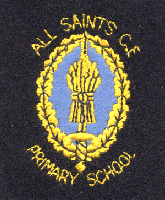|
Part One...cont In 1903 the school was visited and was found to have a Schoolroom for 144 children, an Infants’ room for 77 and 4 classrooms each for 38 children. This made 413 children, but the number allowed by the Department of Education was 390. There was no central hall and two cloakrooms. The girls had 7 privies “well ventilated”, the boys 5, but the teachers had no closets. There were 2 lavatories in each cloakroom, but no playground as yet. During Mr. Leigh’s time as Head Teacher he was “very painstaking in giving his scholars a thorough grounding on reading, writing and arithmetic and his pupils were known for their good handwriting.” His obituary also noted that “he laid their scholastic foundations well and truly, and they never had to unlearn what he taught them.” Upon Mr. Leigh’s retirement in 1914, Mr. McLean was appointed from 145 applicants. Mr. H. Revill, one of the Assistant Teachers joined the Army and was not replaced until 1918 by Mrs. Kenyon. Her salary of £120 was three times that paid to women teachers at the turn of the century. Yearly the Local Education Authority demanded improvements to lavatories, playgrounds or fabric of the school. However, in 1918 when Canon Adams retired after 42 years as Chairman of the Managers, the School Inspector declared that All Saints’ Church of England School, in every respect, management, building, attendance and efficiency, held the premier position over all other schools in the neighbourhood. In 1929 a meeting was held to discuss the transfer of children at 11 years to a separate post-primary school. A new Secondary School was constructed on Hibbert Lane and in 1931 All Saints’ became a Primary School for children of 5 to 11 years of age. A former Assistant Mistress at All Saints’ Primary School gives a picture of the school after 1931. “There were eight classes in the school, six in separate classrooms and two in the Hall divided by a screen. This restricted the use of the Hall, the timetable being maneuvered for singing lessons at the piano with two classes at the same time... .Lack of space was an ever-present problem [“it remains so!”]. Physical education consisted of exercises outside because the hall was occupied. The boys played football at Hawk Green.” In 1938, playing fields were rented for the school, the County Education Committee making a grant of £3 per annum for the Vicarage Field. This year also saw the re-grading of the school for 244 pupils. There was no staffroom and the Head Teacher’s desk was in the Hall. In 1944 the question facing
the school was whether to remain “Aided” or become “Controlled”. The
Managers decided to continue as an Aided School and in 1946 it was decided to
make All Saints’ a 5 class school for 200 children, and provide a site for a
dining room and kitchen. But by 1950 such were the adverse criticisms of the
building by the authorities that, on the advice of the Parochial Church
Council, the Managers agreed to allow the school to become Controlled in 1951.
This meant that the Local Authority would increase its influence in the school
but would also be expected to finance improvements. It cost £6000 to put the
building in order. A clear indication of how the situation had deteriorated
could be seen when a Head Teacher who was appointed to succeed Mr. Revill in
1946 refused the post because of the poor conditions of the School House. Mr.
Higson was then appointed and continued until 1951 when he transferred to the
newly opened Rose Hill Primary School. He was succeeded by Mr. Martlew. |
|||||||||||||
